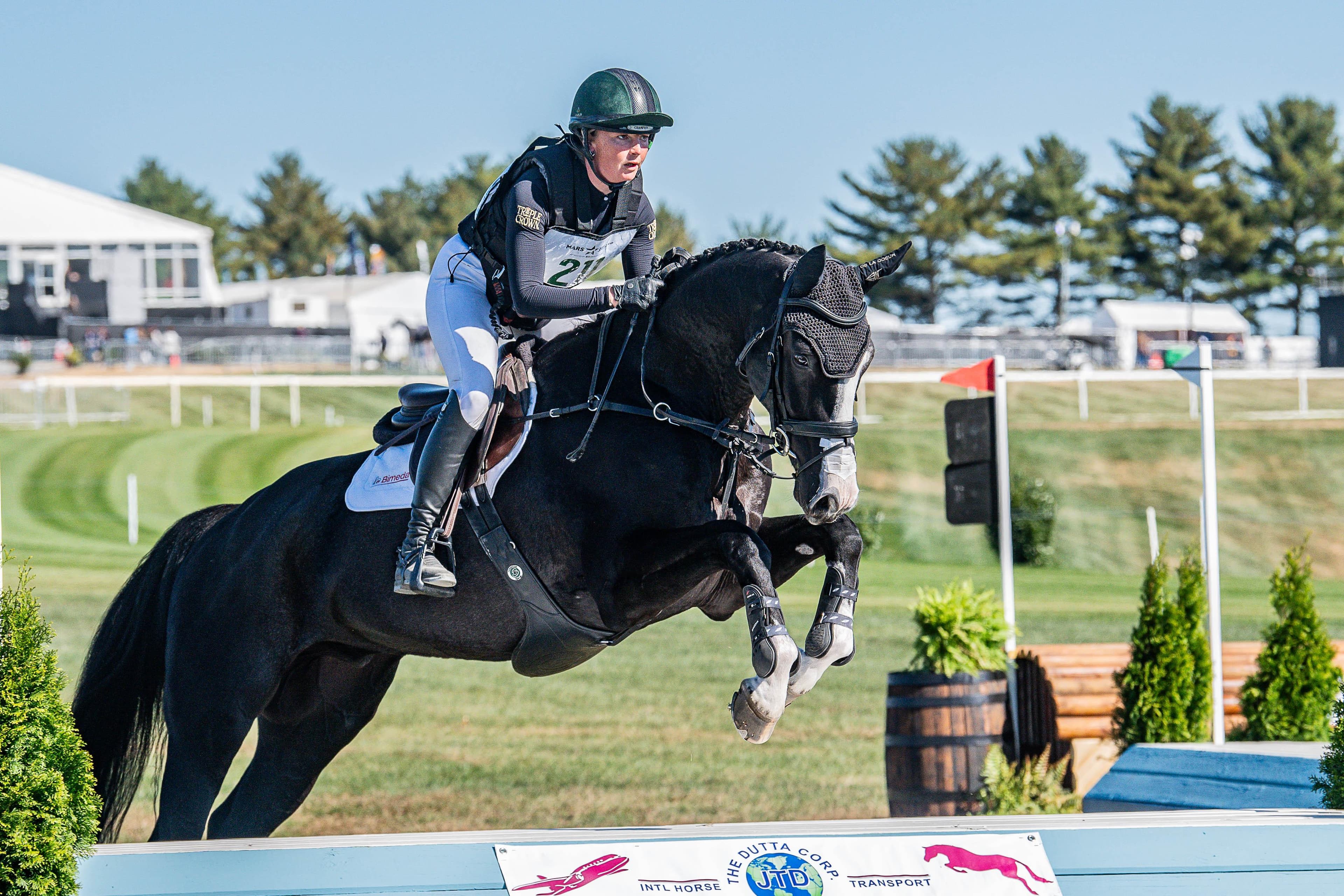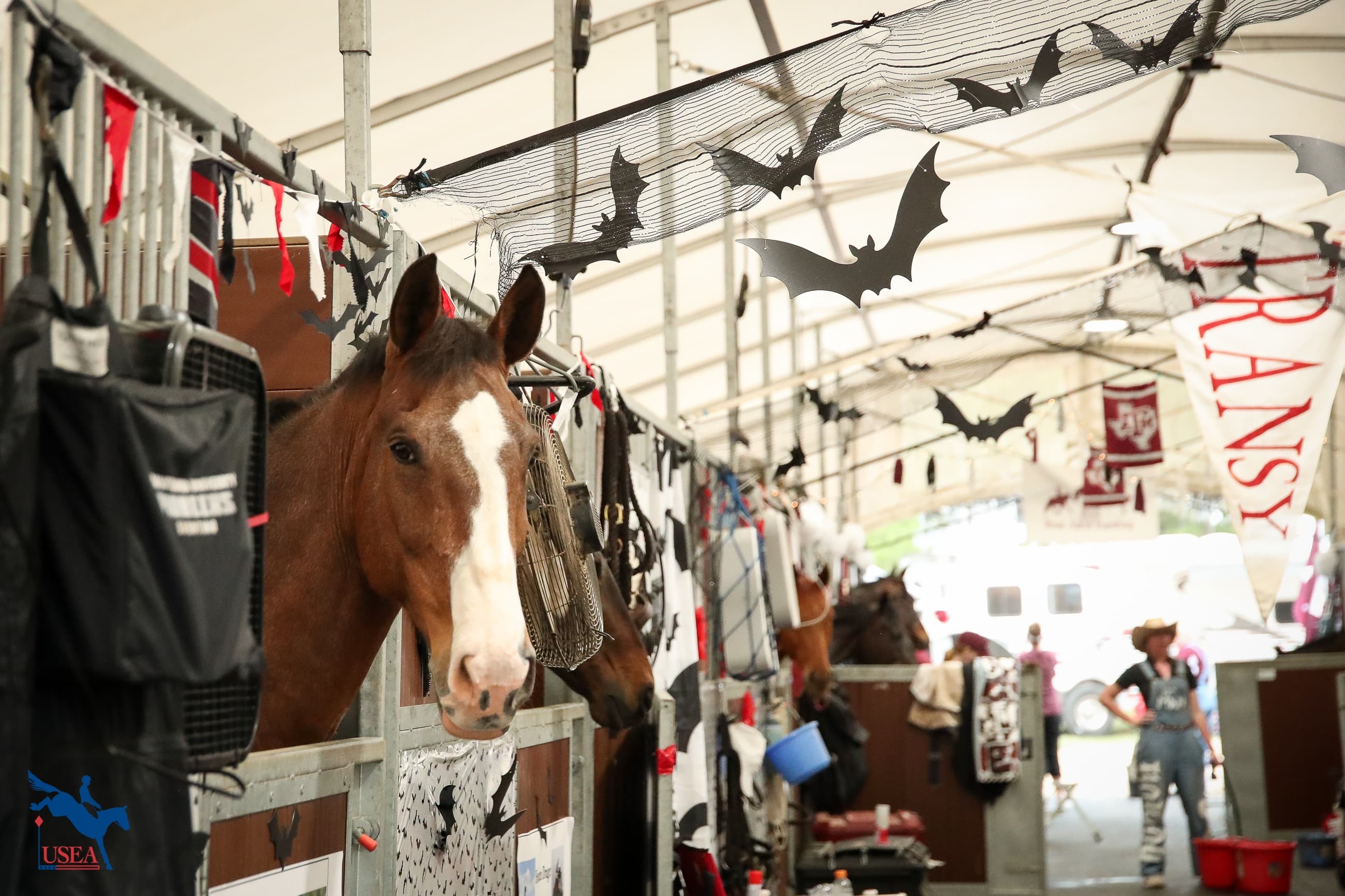Fitness for Healing with Dana Cooke

“I think our bodies get used to riding and our overall fitness level just starts to plateau after a while. It gets to the point that it doesn’t matter how many horses we ride in a day, we just stay at the same level of fitness."
Canadian eventer and 2019 Pan American Games team bronze medalist Dana Cooke is serious about her out-of-the-saddle fitness. She’s used the P90X and Insanity workouts, CrossFit, and has been an avid runner most of her life. And, with more free time on her hands due to the COVID-19 pandemic, Cooke explained that she’s added stretching to her routine as well. “I found a trainer on YouTube that has a bunch of stretching videos that I really enjoy,” she said. “She has everything from 10-minute to 60-minute videos. Currently at the end of the riding and teaching part of my day, before I sit down on my computer for a few hours, I jump on my treadmill for 20 minutes and then do a 20- or 30-minute stretch video. My husband James used to be a Physical Education teacher as well as a CrossFit coach, so days when he is around I will run through a work out with him. Especially in the wintertime, when the arena is frozen first thing in the morning, I will go down to the gym with James and run through a workout before I get started riding.”
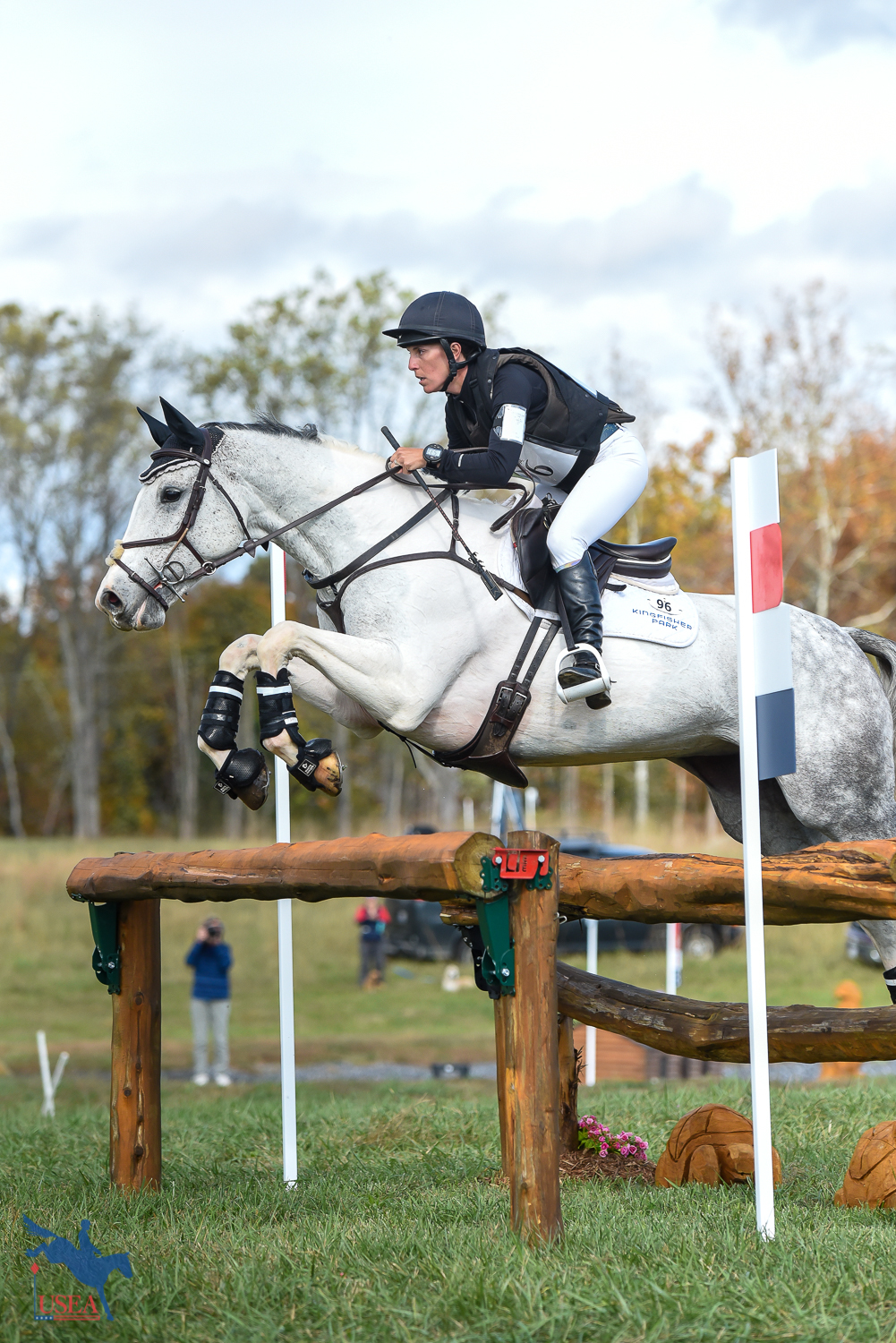
“The biggest difference that I have noticed is from the stretching,” she commented. “As riders, I don’t think we stretch enough, some of us not at all (I used to be that person), and I think that we all can get very tight in our bodies. I have noticed a lot more range of motion and a lot less tension in my body. I also have problems with my right hand going numb when I ride and the stretching has made a significant improvement to this problem. I have also found that I have less pain and stiffness both at the beginning and end of my day since I have started stretching.”
“I think the out-of-saddle fitness also helps with my strength and stamina, not only on the daily riding front, but also when competing multiple horses,” she continued. “I think as professional riders, once we get to a certain point in our riding, it doesn’t matter how many horses we ride, our bodies and our fitness level starts to plateau. We need to add something extra to our routine.”
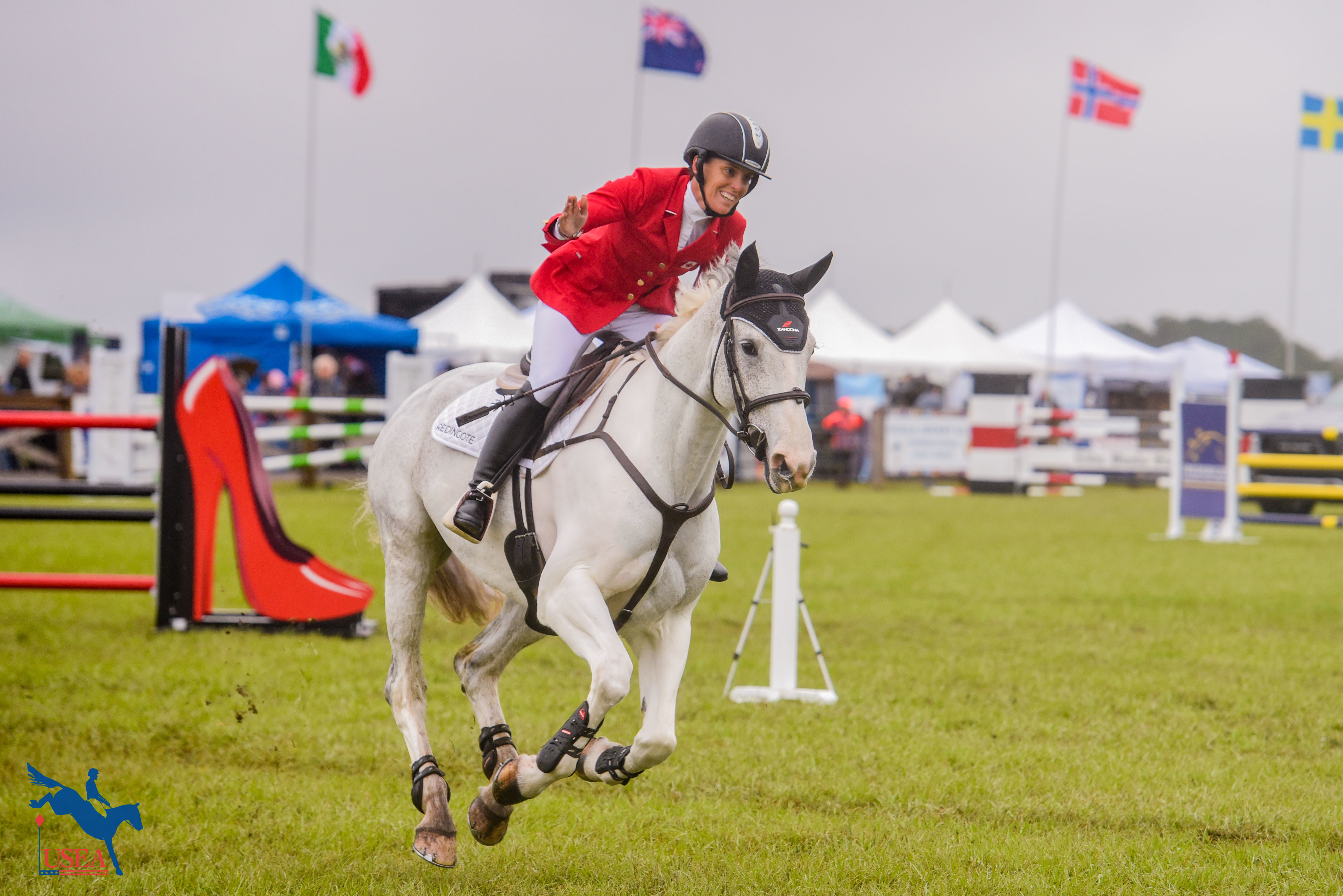
Cooke is no stranger to injuries but said that her out-of-the-saddle fitness routine has both helped protect her from more serious injury and has helped her to recover faster. “My most serious injury was when broke my pelvis in three places back in 2015,” she recalled. “I was told it would be three months before I could sit on a horse again. I spent 10 days in a hospital and another 10 days at a physical rehab facility, where I did three hours of physical rehab a day. When I got home from the rehab facility, I went to see a physical therapist once a week for 12 weeks. She gave me exercises to do on my own and every day at home I would spend at least one hour doing my PT exercises. At six weeks my doctor gave me the thumbs up to sit on a horse again (walking only) and at three months I was back jumping again.”
Cooke also recounted the experience of breaking her ankle in her stirrup, mid-jump. “My ankle only put me out for a couple of weeks and I was actually able to ride without a stirrup after a week (I made sure it was on one of the quietest horses I had),” she said. “I went back to the same physical therapist from my pelvis again once a week and went through the same routine of doing my hour of PT exercises at home. The doctor gave me the clear to put my foot back in a stirrup at two weeks, I was jumping at four weeks, and competing at six weeks. I also taped my ankle with athletic tape (this gave me a lot more stability in my ankle) when I first started putting my foot in a stirrup for about the first month and then after that I would tape it when I jumped. I did this for about two months (which took me through Bromont) because I was terrified I would break my foot in the stirrup again.”
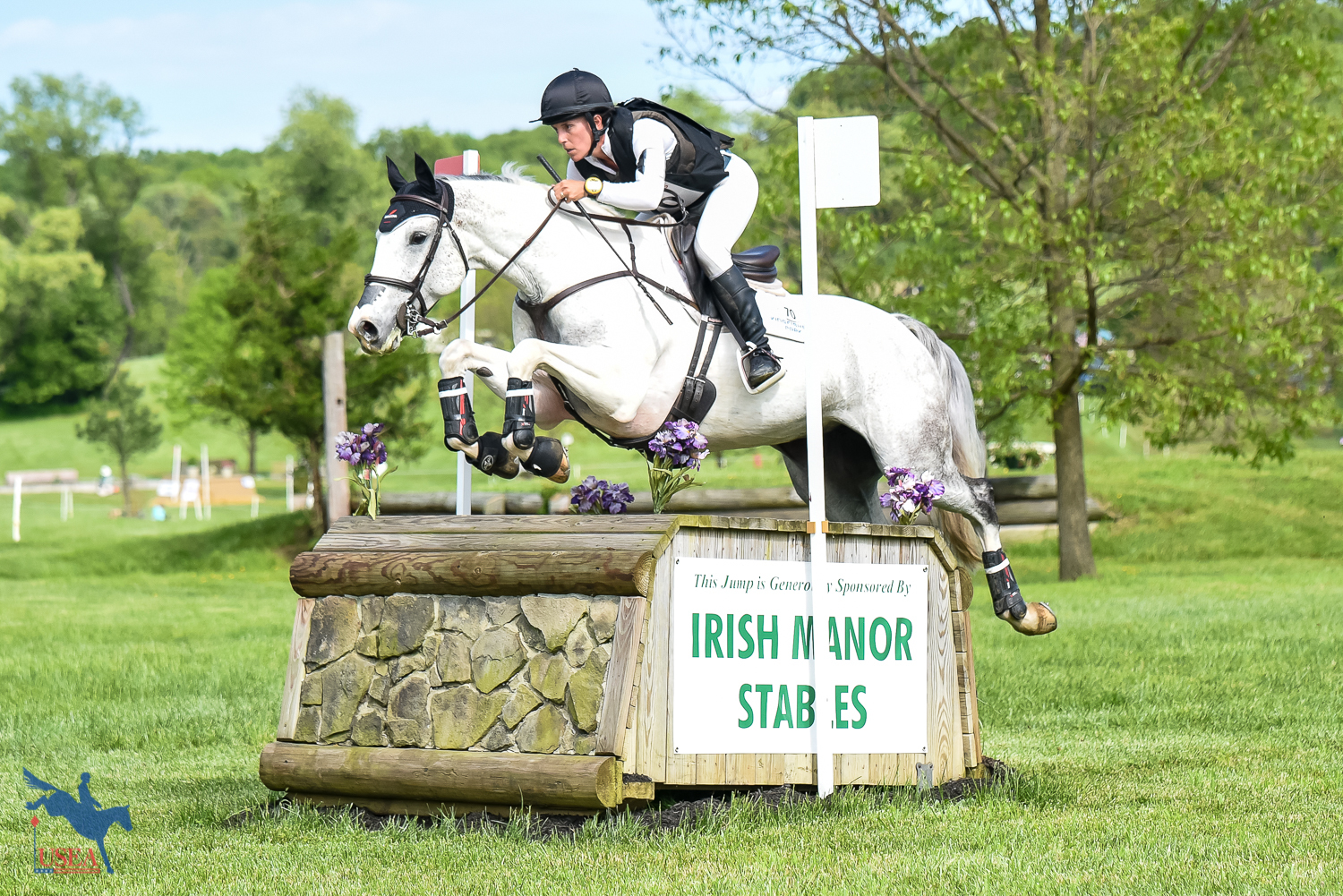
For both experiences, Cooke said she was able to cut her expected recovery in half because of how strictly she adhered to her physical therapy routine. “The fitter you are going into your injury, the faster and easier you will recover,” she said. “I was also very mentally determined to back to riding ASAP. I never got back to riding before I was allowed and cleared by my doctors because the risk of getting back on too early and either reinjuring or slowing down my healing wasn’t worth it.”
“Do as much therapy as you can, but NO MORE than your PT allows/clears you to do,” she continued. “Yes, there is some pain that you have to push through in order to recover, but there is some pain that you really shouldn’t push through. Finally, don’t forget to rest. Your body needs rest and time to recover/heal. I think it’s important when you get injured to take time and rest your body early into your injury. Take the time upfront in your injury, otherwise if you push it, you will have to take more time later.”
“I also think it is important to have body work done, whether it is massage, chiropractic, acupuncture, etc.,” Cooke added. “We do it to help our horses feel better, so why not do it for yourself? The sport is hard on our bodies, if we want to have a longer riding career, we need to take better care of ourselves.”
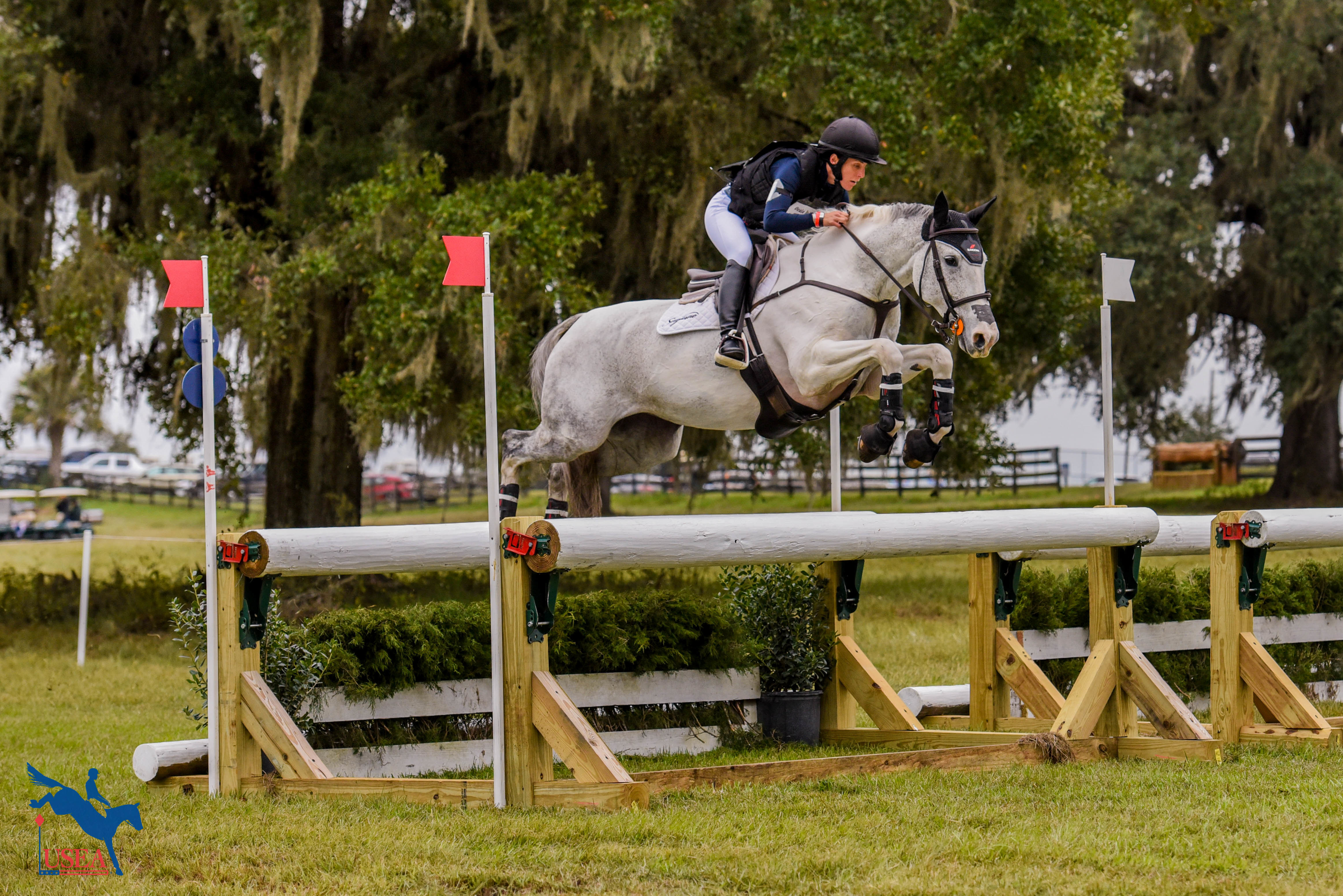
Apart from the benefits Cooke experienced coming back from injuries due to her fitness, she said that cross-training promotes the body’s day-to-day healing process, keeping her healthier overall. “I noticed when I hadn’t worked out in a while, that my “riding” muscles were super strong, but I was actually getting weaker in other parts of my body,” she observed. “I think exercising and stretching helps riders feel better out of the saddle. We can all feel a little stiff, battered, and bruised at times, plus we spend a lot of time sitting in a vehicle driving to horse shows. Exercise gets the blood flowing, which helps the body to heal.”
Cooke recognized that it can be hard to add something new to your routine, but that the benefits are worth the short-term discomfort. “It requires making a change and a commitment and can feel a bit daunting at times,” she acknowledged. “I know for me it has to be easy – if it’s not easy I won’t do it. I’m not going to get up at 5:00 a.m. just so I can work out – that’s not me – and I don’t have a lot of time to drive to a gym to do an exercise class, and if my husband isn’t around I most likely won’t go down to the gym for a workout. That’s why I bought a treadmill. It’s in my house and it’s easy and convenient (also they are not as expensive as I thought they would be!) The stretching videos I can do in my house or in my trailer when I am away – again, they are easy and convenient and the best part is that they are FREE!”
The bottom line? “Find something that is easy to add to your routine, even if it is just a few minutes a day. After a while you will find it gets easier to build on that.”
If you have a unique fitness routine, the USEA wants to hear from you! Email Jessica Duffy at [email protected] with your fitness routines, stories, or advice. To read other articles about rider fitness, click here.

